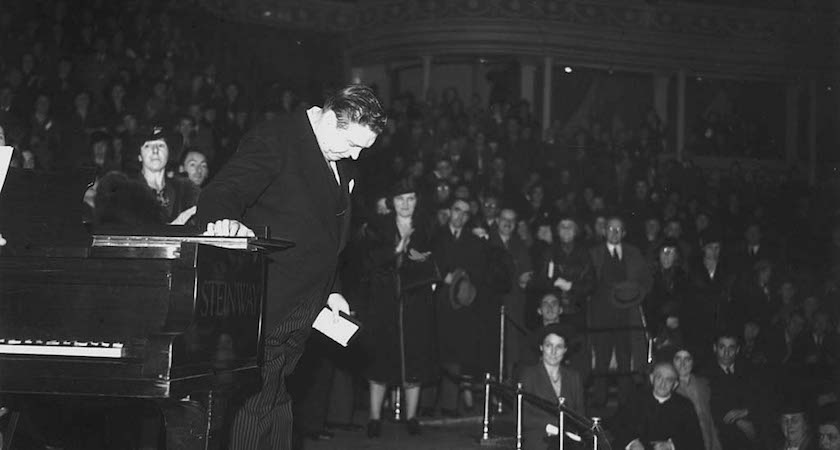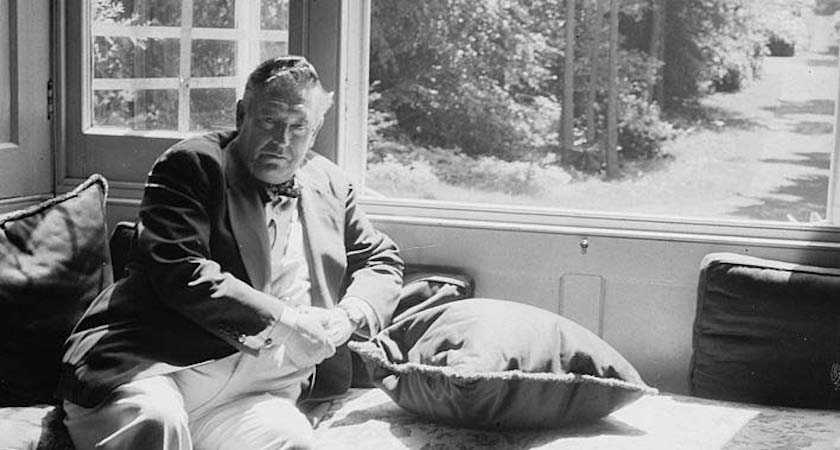Although he was a prolific recording artiste, McCormack’s work is now largely forgotten. Tune in to RTÉ Lyric or Classic FM in Britain and you are unlikely to hear any of his music today.
Yet throughout the 20s, 30s and 40s McCormack was an international superstar. Michael Gill looks at his life and legacy...
 John McCormack bows to the applause at one of his final performances at the Royal Albert Hall in London. (Picture: London Express/Getty Images)
John McCormack bows to the applause at one of his final performances at the Royal Albert Hall in London. (Picture: London Express/Getty Images)McCormack was born in Athlone and sang in the local Church choir, before his family moved to Dublin where he on a gold medal in the Féile Ceoil of 1903. He was also an associate of James Joyce, who had a fine tenor voice himself.
He then studied opera under Sabatini and assumed the name of Giovanni Foli (his wife’s maiden name was Foley) as it was thought that his Irish surname would be unpronounceable in Italy.
In 1907 he made his debut at London’s Covent Garden and became the theatre’s youngest principal tenor.
His recording of Il Mio Tesoro from Mozart’s Don Giovanni is still regarded by many as the definitive version of this Aria.
In 1909 he began his career in America and started to concentrate his career on the concert platform and the recording studio, only appearing occasionally in opera.
He toured the world and whether his performance was at Carnegie Hall in New York, The Sydney Opera House or London’s Albert Hall it was assured of being sold out.
McCormack was Ireland’s most famous singer during the War of Independence, The Civil War and the birth of the New State.
 John McCormack at home after his retirement from the stage in 1938. (Picture: Tunbridge/Tunbridge-Sedgwick Pictorial Press/Getty Images)
John McCormack at home after his retirement from the stage in 1938. (Picture: Tunbridge/Tunbridge-Sedgwick Pictorial Press/Getty Images)In 1932, he performed a rendition of Panis Angelicus before an estimated audience of a million people at The Eucharistic Congress at the Phoenix Park Dublin.
But it was his treatment of Irish ballads which endeared him to mass audiences in Ireland, Britain and US.
One of his greatest gifts was the ability to turn even the most mawkishly sentimental song into an art form.
He died in Dublin in 1945 at the age of 61 after suffering from emphysema. We are extremely fortunate that he left a massive collection of good quality recordings, many of which have been digitally enhanced.
If you are unsure of what all the fuss was about, think of your favourite Irish ballad, (the chances are that he will have recorded it.)
Download it and listen to the pure voice, travelling down through the generations. I guarantee that you won’t be disappointed.

